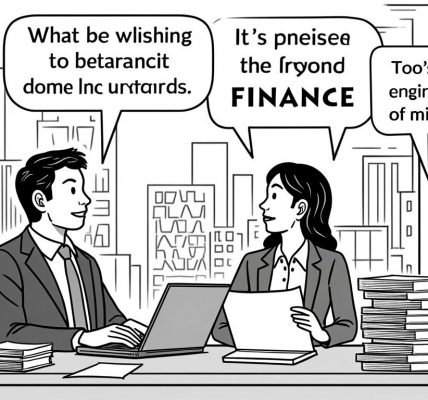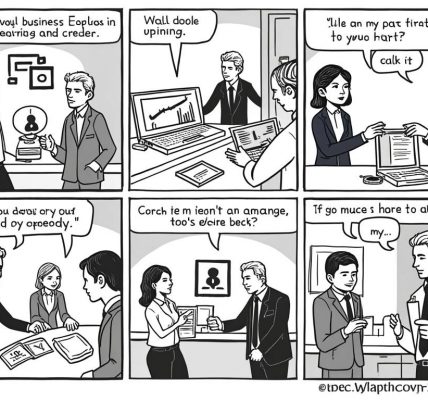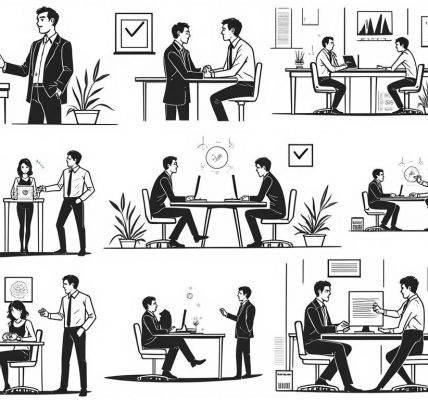
Blockchain Basics: Understanding the Technology Behind Crypto
Reading time: 12 minutes
Ever wondered how Bitcoin transactions happen without banks? Or how digital currencies maintain security without central authorities? You’re about to discover the revolutionary technology that’s reshaping finance, supply chains, and digital trust itself.
Table of Contents
- What Is Blockchain Technology?
- How Blockchain Actually Works
- Types of Blockchain Networks
- Blockchain vs. Traditional Systems
- Real-World Applications Beyond Crypto
- Challenges and Limitations
- Getting Started with Blockchain
- Frequently Asked Questions
What Is Blockchain Technology?
Think of blockchain as a digital ledger that’s shared across thousands of computers simultaneously. Unlike traditional databases controlled by single entities, blockchain distributes identical copies of transaction records across a network, making manipulation virtually impossible.
Here’s the fascinating part: every transaction gets bundled into a “block” and cryptographically linked to previous blocks, creating an unbreakable chain. Once information enters this chain, it becomes permanent—like writing in digital stone.
The Core Components
Blocks: Digital containers holding transaction data, timestamps, and unique identifiers called hashes.
Nodes: Individual computers maintaining copies of the blockchain, constantly verifying new transactions.
Consensus Mechanisms: Protocols ensuring all network participants agree on transaction validity before adding new blocks.
Quick Scenario: Imagine sending $100 to a friend. Traditional banking requires trusting intermediaries to process your transfer. Blockchain eliminates this need—the network itself validates and records your transaction across thousands of computers, creating an immutable record that no single party can alter.
How Blockchain Actually Works
Let’s break down the step-by-step process that makes blockchain revolutionary:
Transaction Initiation
When you initiate a blockchain transaction, you’re essentially broadcasting a message to the entire network: “I want to transfer X amount to address Y.” This message includes your digital signature, proving you own the funds without revealing your private key.
Network Validation
Network nodes immediately begin verifying your transaction. They check:
- Do you actually possess the funds you’re trying to send?
- Is your digital signature authentic?
- Are you attempting to spend the same funds twice?
This validation happens within seconds across thousands of computers simultaneously.
Block Creation and Mining
Valid transactions get bundled into blocks by special nodes called miners. These miners compete to solve complex mathematical puzzles, requiring significant computational power. The first miner to solve the puzzle gets to add their block to the chain and receives cryptocurrency rewards.
According to blockchain research firm Chainalysis, Bitcoin miners collectively consume approximately 110 TWh of electricity annually—equivalent to the entire energy consumption of Argentina.
Types of Blockchain Networks
Not all blockchains operate identically. Understanding the different types helps clarify which applications suit specific needs:
| Blockchain Type | Access Level | Control | Speed | Use Cases |
|---|---|---|---|---|
| Public | Open to everyone | Decentralized | Slower | Cryptocurrencies, DeFi |
| Private | Restricted access | Centralized | Faster | Enterprise solutions |
| Consortium | Semi-decentralized | Controlled by group | Moderate | Supply chain, banking |
| Hybrid | Controlled public access | Mixed governance | Variable | Healthcare, real estate |
Public Blockchains: The Original Vision
Bitcoin and Ethereum exemplify public blockchains—completely open networks where anyone can participate, validate transactions, and access historical data. These networks prioritize decentralization and censorship resistance over speed and efficiency.
Private Blockchains: Enterprise Solutions
Companies like Walmart use private blockchains for supply chain tracking. These networks offer faster transaction processing and greater control while maintaining blockchain’s immutability benefits.
Blockchain vs. Traditional Systems
Transaction Speed Comparison
While traditional payment systems excel in speed, blockchain networks offer unprecedented transparency, immutability, and decentralization. The trade-off becomes clear: sacrifice some efficiency for revolutionary trust and security benefits.
Key Advantages of Blockchain
Elimination of Intermediaries: Direct peer-to-peer transactions reduce costs and processing times while removing single points of failure.
Immutable Records: Once confirmed, transactions cannot be altered or deleted, creating permanent audit trails.
Global Accessibility: Anyone with internet access can participate, regardless of geographic location or banking relationships.
Real-World Applications Beyond Crypto
Supply Chain Revolution: Walmart’s Food Traceability
Walmart implemented blockchain technology to track food products from farm to shelf. When contamination occurs, the company can now trace affected products in 2.2 seconds instead of weeks. This dramatic improvement prevents widespread illness and reduces food waste.
“Blockchain technology enables us to quickly identify the source of contamination and remove only affected products from shelves,” explains Frank Yiannas, Walmart’s Vice President of Food Safety.
Digital Identity: Estonia’s e-Residency Program
Estonia leverages blockchain for digital identity management, allowing citizens to access government services, vote, and conduct business online securely. Over 98% of Estonian citizens use digital signatures for official documents, demonstrating blockchain’s potential for streamlining bureaucratic processes.
Smart Contracts: Automating Trust
Smart contracts execute automatically when predetermined conditions are met. Insurance companies use these programs to process claims instantly when trigger events occur, such as flight delays or natural disasters. AXA’s flight delay insurance automatically compensates passengers without human intervention, reducing processing time from weeks to minutes.
Challenges and Limitations
Well, here’s the straight talk: Blockchain isn’t a silver bullet for every problem. Understanding limitations helps set realistic expectations and identify appropriate use cases.
Scalability Bottlenecks
Bitcoin processes approximately 7 transactions per second, while Ethereum handles about 15. Compare this to Visa’s 65,000 TPS capability, and the scalability challenge becomes apparent. Layer-2 solutions like Lightning Network and Ethereum’s upcoming sharding aim to address these limitations.
Energy Consumption Concerns
Bitcoin’s proof-of-work consensus mechanism requires massive computational power. Cambridge University estimates Bitcoin’s annual energy consumption exceeds that of entire countries like Argentina or Norway. However, newer consensus mechanisms like proof-of-stake reduce energy requirements by over 99%.
Regulatory Uncertainty
Governments worldwide are still developing blockchain regulations. This uncertainty creates compliance challenges for businesses and may slow adoption. However, regulatory clarity is gradually emerging as authorities recognize blockchain’s potential benefits.
Getting Started with Blockchain
Ready to transform complexity into competitive advantage? Here’s your practical roadmap:
Educational Foundation
Start with Bitcoin and Ethereum: These established networks provide excellent learning opportunities. Create wallets, make small transactions, and observe how the technology functions in practice.
Explore Blockchain Explorers: Websites like Blockchain.info and Etherscan allow you to view real-time transactions and understand network activity.
Hands-On Experience
Set Up a Wallet: Choose reputable wallet providers like MetaMask for Ethereum or Electrum for Bitcoin. Start with small amounts to familiarize yourself with the process.
Join Test Networks: Practice transactions on testnets using fake cryptocurrency before risking real funds.
Professional Development
Learn Programming Languages: Solidity for Ethereum smart contracts, Python for blockchain analysis, or JavaScript for decentralized applications.
Consider Certification Programs: Organizations like IBM and Coursera offer blockchain certification courses that validate your knowledge.
Frequently Asked Questions
Is blockchain technology secure?
Blockchain networks are extremely secure due to cryptographic hashing, distributed consensus, and immutable record-keeping. However, individual applications built on blockchain can have vulnerabilities. The underlying blockchain protocol itself has never been successfully hacked, though exchanges and smart contracts have experienced security breaches.
Can blockchain work without cryptocurrency?
Absolutely. Many enterprise blockchain solutions focus on data integrity, supply chain tracking, and digital identity without involving cryptocurrency. Private and consortium blockchains often use alternative incentive mechanisms or operate without tokens entirely.
How much does it cost to use blockchain?
Costs vary significantly by network and transaction complexity. Bitcoin transactions typically cost $1-50 depending on network congestion, while Ethereum gas fees range from $5-200 for complex operations. Newer blockchains like Polygon offer sub-cent transaction fees, making them more accessible for frequent use.
Your Blockchain Journey: Next Steps
The blockchain revolution isn’t coming—it’s already here. From reshaping financial systems to revolutionizing supply chains, this technology is creating unprecedented opportunities for innovation and efficiency.
Immediate Actions:
- Set up your first cryptocurrency wallet and make a small transaction
- Explore a blockchain explorer to understand network activity
- Identify one use case relevant to your industry or interests
- Connect with blockchain communities and forums for ongoing learning
- Consider how blockchain might solve existing problems in your field
The most successful blockchain adopters aren’t those who understand every technical detail—they’re the ones who recognize transformative potential and take action. Whether you’re an entrepreneur, developer, or curious observer, blockchain technology offers tools to build more transparent, efficient, and trustworthy systems.
As we stand at the intersection of traditional finance and decentralized innovation, one question remains: How will you leverage blockchain technology to create value in your world? The distributed ledger awaits your contribution to its ever-growing chain of innovation.

Article reviewed by Michelle Hope, Real Estate and Investment Expert, on July 2, 2025




